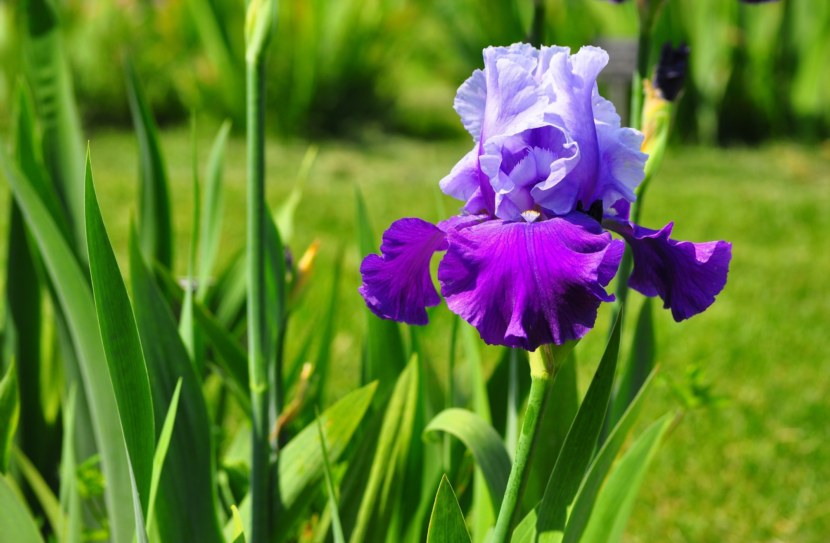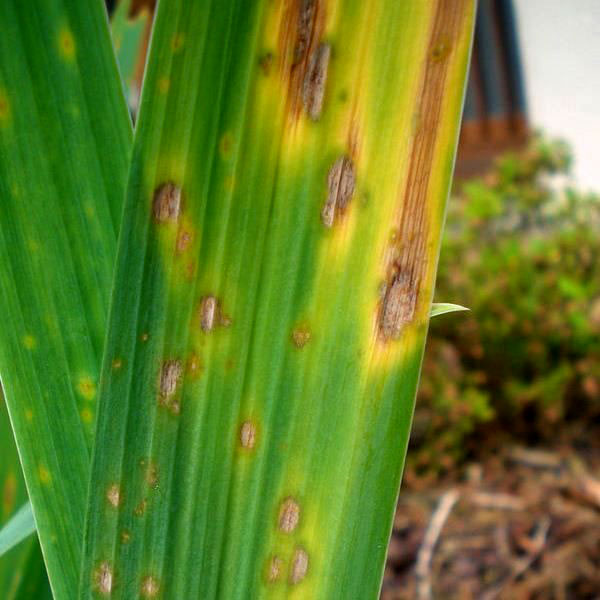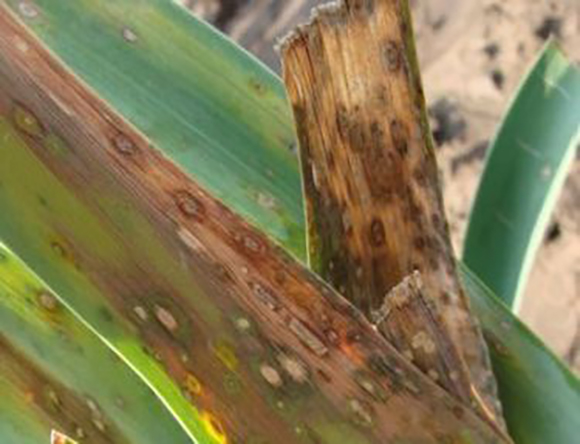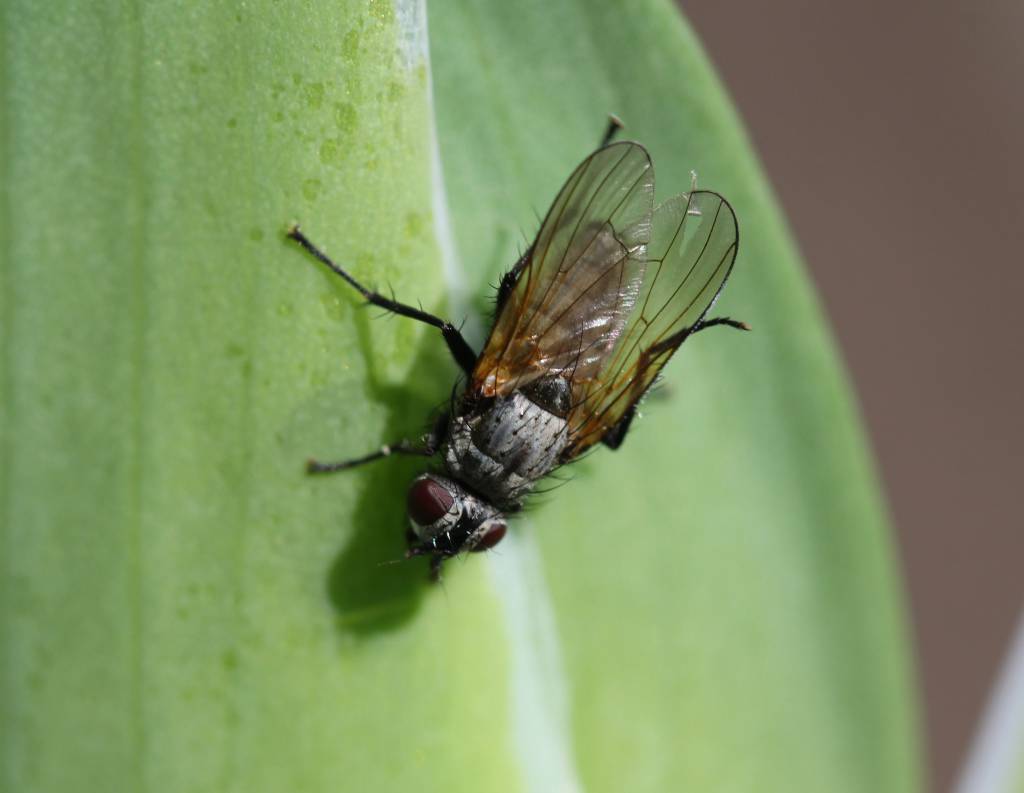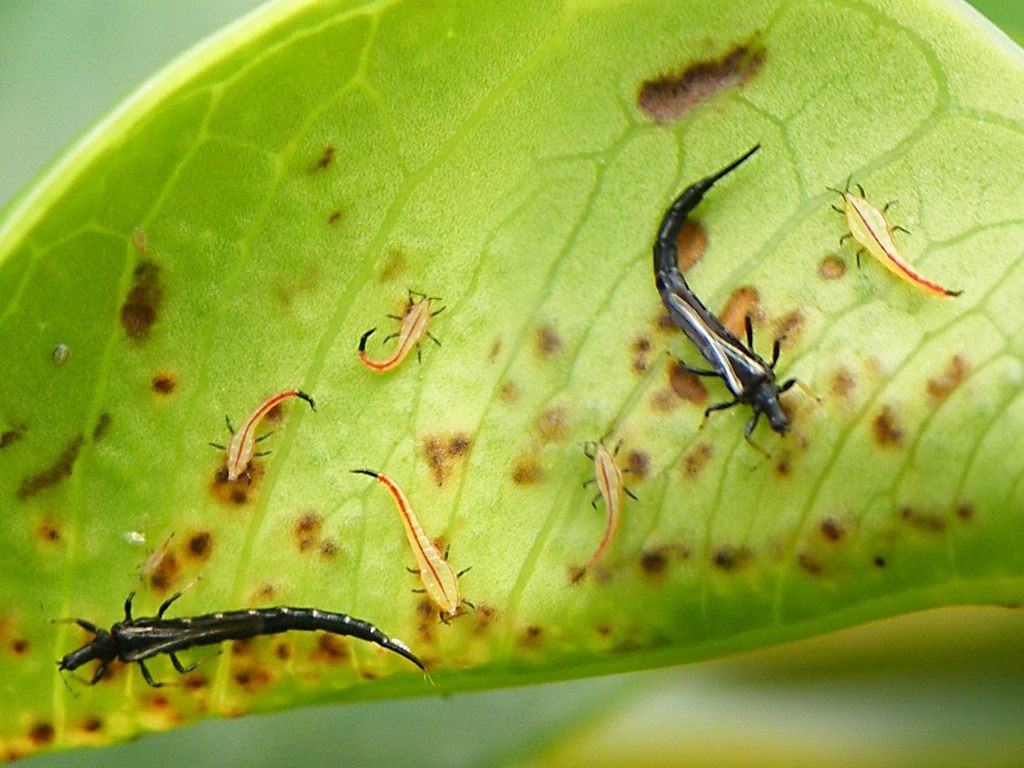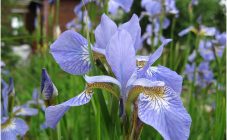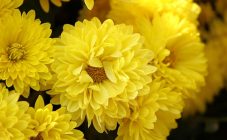Content:
Anyone who grows irises in their garden wants to see them bloom healthy and lush, but this wonderful flower, like any plant, can get sick or be attacked by pests. In general, irises are quite resistant to diseases and unpretentious to growing conditions, but new breeding species cannot boast of this.
Iris Disease Signs and Causes
Iris diseases manifest themselves in different ways, an experienced gardener should be able to determine the cause at the first signs in order to start treating the plant as soon as possible.
Do not bloom after transplant
Transplanting can cause irises to not bloom. If, in the case of deep planting, the root collar does not receive sunlight, the iris will not die, but it will not bloom.
Decorative irises do not bloom due to the lack of sufficient sunlight. Such bushes may well grow and develop in shady areas, however, in such conditions, the color will no longer be.
If the roots were damaged during transplantation (separation) of irises, the plant will absorb water worse, which will affect the development of new shoots. All these factors interfere with the normal flowering of iris irises.
Pest insects can also be the reason why irises do not bloom, some leaves remain intact. Most of all, scoops, bears, slugs and May beetles harm.
Siberian and bearded irises do not bloom
These types of garden irises are very popular for their interesting color and lush bloom. However, growers often wonder why the lush bush of the bearded iris does not bloom, and how to fix it? The point may be in the soils unsuitable for these species of cockerels: the Siberian iris dies on alkaline soils, and the bearded one - on acidic ones. In addition, flowering is disturbed as a result of damage to the buds by one of the main pests of these species - the iris fly.
Leaves turn yellow and deteriorate
Several diseases of iris have been identified, serving as an answer to the question of why the leaves of irises turn yellow and deteriorate.
An experienced florist with such symptoms will suspect:
- bacterial rot or bacteriosis;
- soft or weeping rot;
- fusarium or fusarium rot;
- a mosaic viral disease that is carried by aphids.
The spread of putrefactive lesions among iris beds is facilitated by the accuracy of plantings and prolonged damp weather. Fusarium rot begins to spoil the plant from the roots and rises to the leaves, which, as a result, turn yellow and die.
Leaves are drying
If the foliage of the cockerels begins to dry en masse, this may mean defeat by diseases such as:
- Rhizoctonia disease caused by the fungus Rhizoctonia solani, under its influence in the rainy period, the leaves of irises gradually change color and dry out;
- fungal rust - the leaves begin to dry out around the focal lesions-pustules, later the fungus captures the whole plant.
Spots on the leaves
Any spot on iris leaves indicates possible flower diseases:
- hyterosporium - characterized by the appearance of oval spots of a yellow hue in spring, which then change color to brown and become covered with a black bloom;
- askohitioch - manifests itself as brown spots with a large number of small dots;
- damage to the roots of the flower by parasitic insects with thrips - as a result of their vital activity, the leaves of the iris become covered with brownish spots.
Common diseases
Despite their general resistance, irises still suffer from diseases caused by bacteria, fungi and viruses.
Most often, bettas are affected by root rot, another name is "bacteriosis", because it is caused by bacteria. Diseased flowers do not grow, the foliage becomes brown and dry. The rhizome is destroyed from the inside, which leads to the death of the plant. Hypothermia of roots, deficiency of phosphorus-calcium compounds, as well as contaminated manure or soil contributes to the development of bacteriosis.
Fungal Fusarium is manifested in the rotting of the roots of the flower. As a result of the defeat, the roots, leaves and peduncles of the plant dry out. Most often, irises are infected with fusarium when the roots are divided when infected soil gets on them.
Fungi also cause gray rot disease, which affects the stems and foliage of irises, as well as rhizomes. Diseased leaves lose their color and density, rot, covered with a gray coating. The roots are covered with black tubercles from the sclerotia of the parasitic fungus.
Fungi are also to blame for the development of heterosporiosis (leaf spot) in flowers, the outermost leaves of the fan are covered with white spots with a watery border, and black dots of spores appear on them as they develop. The disease also captures the inner foliage, after which it dries. It is necessary to fight heterosporiasis, first of all, by removing dry leaves.
Septoria is also a fungal disease, the septoria fungi are "to blame" for it. They cause pale gray small round spots.
Mushrooms of the genus ramularia provoke the disease ramulariasis: small black specks of necrosis with a yellow spore bloom.
The most famous fungal disease is rust. The leaves are covered with brownish spots with fungal spores. The foliage dries and falls off, but the seeds of the parasitic fungus still remain on it, so it is important to quickly eliminate diseased leaves.
Mosaic disease is caused by viruses and appears as a yellow, mosaic-like mesh pattern. Affected flowers stop growing, peduncles do not develop. It is impossible to treat such plants - they die.
How to treat irises
In addition to iris diseases, you need to know the methods of dealing with them. Unfortunately, viral lesions cannot be treated - such irises must be destroyed.
Diseases caused by fungi are cured by broad-spectrum fungicides such as Penncoceb. You can also treat diseased flowers with zinc-containing compounds (copper-containing ones are also suitable) or colloidal sulfur in the form of a suspension.
Heterosporia in irises involves treatment with sulfur and copper colloidal solutions, which are used to process the plants themselves.
It is also necessary to spray the soil next to the flower beds with such compounds that have a powerful healing effect:
- Bordeaux mixture, one percent;
- copper oxychloride;
- chemical composition of "Oxyhom";
- colloidal sulfur and a solution of laundry soap in the form of suspensions.
Sulfur suspension can be prepared independently: 0.3 kg of laundry soap is dissolved in one liter of clean water, supplemented from 50 to 80 g of colloidal sulfur and brought to a homogeneous state. After that, the suspension should be diluted with another 9 liters of water, mixed and drained.
Methods for dealing with iris fly
A fly, resembling an ordinary fly, only of a gray-black spotted color, is the main pest of iris beds. She and her larvae take root in flower buds and feed on its petals.
You can't get rid of the iris fly by simply digging. Chemical means of struggle come to the rescue, which should be applied as soon as the peduncle grows from the rhizome. You can also cultivate the soil under the flowers.
Experts recommend using insecticidal agents such as:
- "Aktara",
- "Actellik",
- "Bi-58",
- "Decis".
It is very important to observe the timing of spraying, otherwise the flowering of the flower beds can not wait.
From folk remedies, you can try before the release of flower arrows to spray the affected bushes with wood ash, dust from tobacco, mustard, infusion of bitter herbs, soapy water with alcohol.
Other pests of irises - thrips, are destroyed by digging up the soil, weeding weeds, abundant watering during dry periods and sanitary pruning of foliage after flowering in autumn.
Three-time spraying with organic agents will also help:
- "Mospilan",
- "Regent",
- "Vertimek",
- "Marshal",
- "Aktofit".
An emulsion of malofos or a mixture of soda ash and soap will help against aphids and bears.
Preventive measures
Prevention of iris diseases consists in observing the planting rules: the place must be well drained, ventilated and insulated. Soil - with a sufficient content of calcium-phosphorus compounds and the required level of acidity. Before planting, the roots of flowers must be etched and the affected areas removed, and the contaminated soil must be disinfected.
One of the most effective preventive measures is spraying with copper-containing preparations. Viroses are prevented by disinfecting the instruments and observing quarantine.
Prevention of bacteriosis includes spraying flowers with antibiotics (but they cannot be abused).
Irises are a decoration of summer cottages, but they can be affected by fungal, bacterial, viral and other diseases. Experienced growers should know the signs of disease in order to determine, for example, why their favorite iris has not bloomed, or the leaves of irises turn yellow and deteriorate, what should be done. With proper care and timely treatment, irises will again delight with lush flowering.
